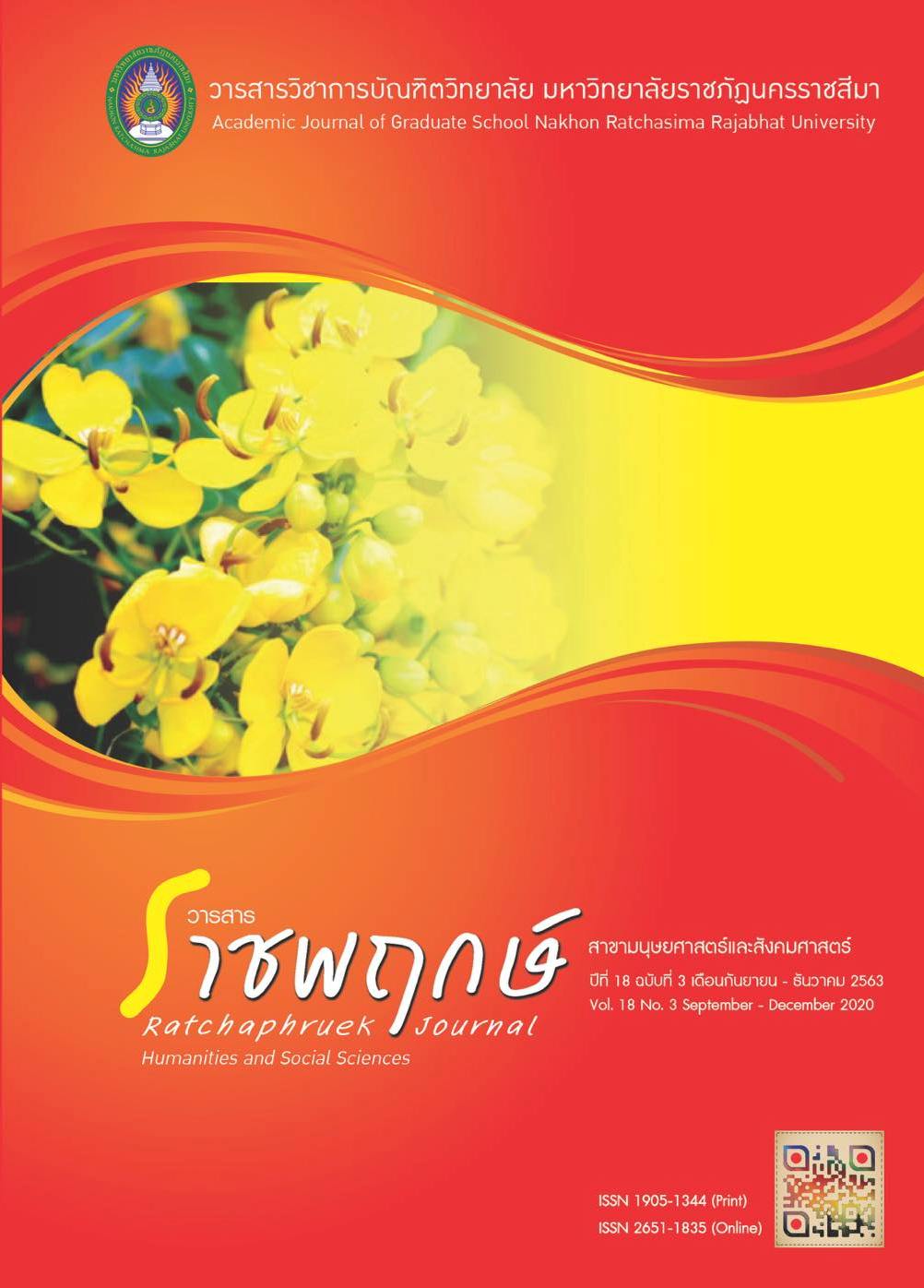ผลของการติดตามการให้โปรแกรมสุขศึกษาและการสัมภาษณ์เพื่อสร้างแรงจูงใจในระยะเวลา 1 ปี ต่อระดับไขมันในเลือดของผู้ป่วยเบาหวานชนิดที่ 2
Main Article Content
บทคัดย่อ
การวิจัยนี้เป็นการวิจัยกึ่งทดลองระยะเวลา 1 ปี เพื่อติดตามการให้โปรแกรมสุขศึกษาและการสัมภาษณ์เพื่อสร้างแรงจูงใจของผู้ป่วยเบาหวานชนิดที่ 2 ต่อระดับไขมันในเลือด กลุ่มตัวอย่าง คือ ผู้ป่วยเบาหวานชนิดที่ 2 จำนวน 70 คน ที่โรงพยาบาลส่งเสริมสุขภาพตำบลหนองนาคำ อำเภอเมือง จังหวัดอุดรธานี โดยการนัดผู้ป่วยมารับยาทุกๆ 2 เดือน ครั้งแรกและครั้งสุดท้ายพยาบาลจะเจาะเลือดเพื่อตรวจหาค่าโคเลสเตอรอล ไตรกลีเซอไรด์ ไขมันดี และไขมันไม่ดี จากนั้นผู้ป่วยจะได้รับโปรแกรมการให้สุขศึกษา และแบบสำรวจการติดตามผลการให้โปรแกรมสุขศึกษาฉบับย่อ และกลุ่มตัวอย่างจะได้รับการสัมภาษณ์เพื่อสร้างแรงจูงใจ และแบบสำรวจการติดตามผลการให้โปรแกรมการสัมภาษณ์เพื่อสร้างแรงจูงใจ การวิจัยครั้งนี้วิเคราะห์ข้อมูล โดยใช้โปรแกรม STATA 13, Texus USA 2007 คือ ค่าเฉลี่ย () และส่วนเบี่ยงเบนมาตรฐาน (S.D.) และ paired t-test
ผลการศึกษาพบว่าผู้ป่วยเบาหวานชนิดที่ 2 ที่เป็นกลุ่มตัวอย่าง 70 คน เป็นเพศหญิง จำนวน 62 คน (ร้อยละ 88.57) อายุเฉลี่ย 60 ปี (S.D. = 6.70) ดัชนีมวลกายส่วนใหญ่อยู่ในช่วงน้ำหนักเกิน 34 คน (ร้อยละ 48.57, เฉลี่ย =25.03 (S.D. = 4.10) มีรอบเอวเกินค่ามาตรฐาน 12 คน (ร้อยละ 19.05) กลุ่มตัวอย่างมีประวัติเป็นโรคเบาหวานและได้รับยาอยู่ระหว่าง 1-12 ปี (เฉลี่ย 6.40 ปี) โดยมากที่สุดคือ น้อยกว่า 3 ปี ร้อยละ 40.00 รองลงมา คือ 10-12 ปี ร้อยละ 25.71 จากผลการศึกษาระดับของไขมันในเลือดได้แก่ คอเลสเตอรอล ไตรกลีเซอร์ไลด์ คอเลสเตอรอลชนิดดี และคอเลสเตอรอลชนิดไม่ดี ก่อนการทดลอง พบว่าไม่แตกต่างจากค่าเฉลี่ยของไขมันในเลือดหลังการทดลอง (1 ปี) อย่างมีนัยสำคัญทางสถิติ (p=0.67, p=0.43, p=0.81, p=0.55 ตามลำดับ)
Article Details
เอกสารอ้างอิง
American Diabetes Association. (2016). Standards of medical care in diabetes-2016 . Diabetes Care. 39(1): S1-119. 2 .
American Association of Clinical Endocrinologists and American College of Endocrinology. (2015). Clinical practice guidelines for developing a diabetes mellitus comprehensive care plan. Endocr Pract. 21(1): S1-87.
Bantle JP, Wylie-Rosett J, Albright AL, et al. (2008). Nutrition recommendationsand interventions for diabetes: a position statement of the American
Diabetes Association. Diabetes Care. 31(1): S61–S78.
Bennett CM, Guo M, Dharmage SC. (2007). HbA1c as a screening tool for detection of type 2 diabetes: a systematic review. Diabetic Med. 24(4): 333-43.
Bonora E, Calcaterra F, Lombardi S, Bonfante N, Formentini G, Bonadonna RC, et al. (2001). Plasma glucose levels throughout the day and HbA1C interrelationships in type 2 diabetes: implications for treatment and monitoring of metabolic control. Diabetes Care. 24(11): 2023-9.
Boren, S. A., Fitzner, K. A. Panhalkar, P. S. and Specker, J. E. (2009). Costs and benefits associated with diabetes education: a review of the literature. The Diabete Educator. 35(1): 72–96.
Centers for Disease Control and Prevention. (2016). National Vital StatisticsReport; 2014. Available from: http://www.cdc.gov/nchs/data/nvsr/
nvsr60/nvsr60_03.pdf. Accessed September 1,
Chavier-Roper RG, Alick-Ortiz S, Davila-Plaza G and Morales-Quinones AG. (2014). The Relationship between diabetes mellitus and body mass index: primary care facility in Puerto Rico. Bol Asoc Med PR. 106(5): 17-21.
Dungan KM. (2008). 1,5-anhydroglucitol (GlycoMark) as a marker of short-term glycemic control and glycemic excursions. Expert Rev Mol Diagn. 8:9–19.
Franz MJ, et al. (1995). Effectiveness of medical nutrition therapy provided by dietitians in the management of non-insulin-dependent diabetes mellitus: a randomized, controlled clinical trial. J Am Diet Assoc; 95(9): 1009-17.
Grundy SM. et. al. (2018). Guideline on the Management of Blood Cholesterol: A Report of the American College of Cardiology/American Heart Association Task Force on Clinical Practice Guidelines. Circulation; 139(25). 1-11.
Haghighatpanah M, NejadASM,Haghighatpanah M, Thunga G, Mallayasamy S. (2018). Factors that Correlate with Poor Glycemic Control in Type 2 Diabetes Mellitus Patients with Complications.Osong Public Health Res Perspect. 9(4): 167−174.
Hemmati Maslakpak H., Razmara S., and Niazkhani Z. (2017). Effects of face-to-face and telephone-based family-oriented education on self-care behavior and patient outcomes in type 2 diabetes: a randomized controlled trial. Journal of Diabetes Research, 11(7); 1-7.
Koro CE, Bowlin SJ, Bourgeois N, et al. (2004). Glycemic control from 1988 to 2000 among US adults diagnosed with type 2 diabetes a preliminary report. Diabetes Care. 27(1):17-20.
Lane C, Huws-Thomas M, Hood K, Rollnick S, Edwards K, Robling M. (2005). Measuring adaptations of motivational interviewing: the development and validation of the behavior change counseling index (BECCI). Patient Educ Couns. 56: 166–73.
Lindsey CC, Carter AW, Mangum S, Greene D, Richardson A, Brown SJ, et al. (2004). A prospective, randomized, multicentered controlled trial to compare the annual glycemic and quality outcomes of patients with diabetes mellitus monitored with weekly fructosamine testing versus usual care. Diabetes Technol Ther. 6:370–7.
Miller ST. ana Akohoue SA. (2017). Two-year follow-up study of a group-based diabetes medical nutrition therapy and motivational interviewing intervention among African American women. Patient Relat Outcome Meas. 8. 57-61.
Miller WR and Rollnick S. (2002). Motivational interviewing: preparing people for change. New York: Guilford Press.
Miller ST. (2011). Diabetes and psychological profile of younger rural African American women with type 2 diabetes. J Health Care Poor Underserved. 22(4): 1239–1252.
Ministry of public health. (2018). Thailand Noncommunicable Disease and Injury Behavior Risk Surveillance Survey. http://ghdx.healthdata.org/record/thailand-noncommunicable-disease-and-injury-behavior-risk-surveillance-survey-2018
Nongnakham primary care unit. Statistics of patients. (2018). Nongnakham primary care unit, Muang district, Udon Thani province. Department of control disease, Ministry of public health. Retrived september 23, 2018, from http://www.thaincd.com/2016/mission/documents.php?tid=32&gid=1020&searchText=& pn= 2.
Resnicow K, McMaster F, Bocian A, Harris D, Zhou Y, Snetselaar L, et al. (2015). Motivational interviewing and dietary counseling for obesity in primary care: an RCT. Pediatrics; 135(4): 649-57.
Stratton IM, Adler AI, Neil HAW, et al. (2000). Association of glycaemia with macrovascular and microvascular complications of type 2 diabetes (UKPDS 35): prospective observational study. BMJ. 321(7258): 405-12.
Toobert DJ, Hampson SE, Glasgow RE. (2000). The summary of diabetes self-care activities measure: results from 7 studies and a revised scale. Diabetes Care. 23(7): 943–950.
Whittemore R, Melkus GD, Sullivan A, Grey M. (2004). A nurse-coaching intervention for women with type 2 diabetes. Diabetes Educ. 30: 795–804.


